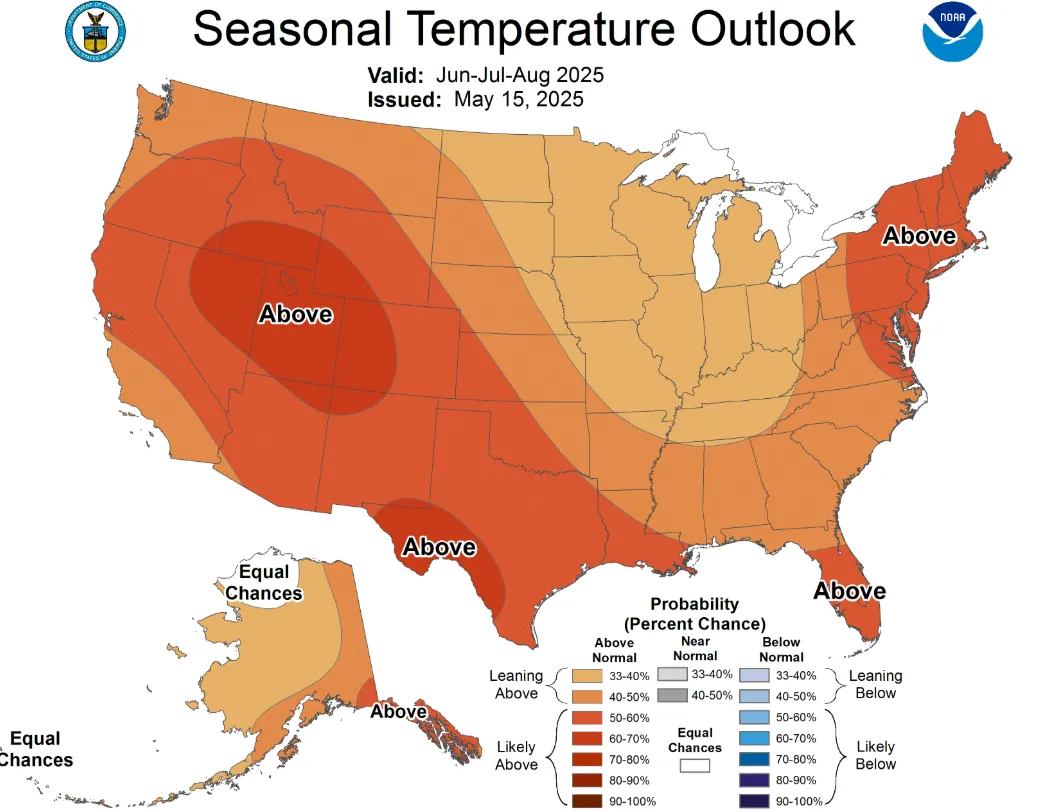Introduction
As summer approaches, forecasts from the National Oceanic and Atmospheric Administration (NOAA) indicate that San Diego will experience a hotter-than-average summer in 2025. This report dives into what residents and visitors can expect during this sweltering season and discusses the broader implications for U.S. climate trends.
Understanding NOAA’s Predictions
The NOAA provides seasonal forecasts based on scientific models that analyze oceanic and atmospheric conditions. For San Diego, the summer of 2025 is projected to be significantly warmer due to a combination of factors, including ongoing climate change, water temperature anomalies in the Pacific Ocean, and shifting weather patterns. Projections for the region suggest a potential for record-breaking heat, raising concerns over public health, water supply, and wildfire risks.
The Statistical Outlook
According to NOAA’s Climate Prediction Center, average temperatures for San Diego during June, July, and August of 2025 are expected to exceed the historical averages by several degrees. The Central Pacific’s sea surface temperatures are playing a vital role, contributing to the development of El Niño conditions, which can lead to warmer and wetter weather in the Western U.S. However, for Southern California, particularly San Diego, the effects of El Niño often mean hot and dry conditions.
An Increased Risk of Heat-Related Casualties
As temperatures soar, so does the risk for heat-related illnesses and fatalities. The CDC indicates that extreme heat can lead to heat strokes, exhaustion, and dehydration. Vulnerable populations, such as the elderly, children, and those with pre-existing health conditions, face an elevated risk. San Diego’s public health departments emphasize that everyone should take precautions and stay informed as the summer heat intensifies.
Historical Context of Extreme Heat
While San Diego is known for its mild climate, summer heatwaves are not uncommon. However, California’s recent history has shown a trend of increasing average temperatures. For example, the summer of 2021 was one of the hottest recorded years, which led to excessive heat warnings and significant health emergencies. This trend raises valid concerns that summer 2025 could bear similar or even more severe implications for public health and safety.
Weather Alerts and Safety Measures
In response to the impending heat, local authorities and NOAA are urging residents to prepare for potential heat advisories. Emergency management officials recommend that people:
- Stay indoors during peak heat hours, especially between 11 a.m. and 4 p.m.
- Ensure air conditioning systems are functional and consider cooling centers for those without adequate refrigeration.
- Stay hydrated; drinking water is crucial to prevent heat-related illnesses.
- Be alert for symptoms of heat exhaustion, which can include dizziness and heavy sweating.
A Call for Community Awareness
Local governments are also conducting outreach campaigns to enhance community awareness surrounding the hazards of excessive heat. These initiatives include distributing brochures, conducting workshops, and using social media platforms to disseminate vital information regarding heat safety. Non-profit organizations are stepping up, pledging to ensure that vulnerable populations, including low-income residents and the unhoused, have access to cooling resources and water.
The Cost of Climate Change
As we brace for a hotter summer, the financial implications of climate change also loom large. Estimates indicate that increasing temperatures could cost California billions of dollars in health care, infrastructure repair, and water shortages. Drought conditions exacerbated by high heat could lead to stricter water usage regulations, impacting agriculture and consumer prices.
Acting on Climate Change
The alarming forecast for summer 2025 serves as a stark reminder of the urgency to confront climate change proactively. Local officials are emphasizing the need for sustainable practices in both urban planning and agricultural methods to mitigate the impact of extreme weather conditions. Public policy focused on reducing greenhouse gas emissions can help stave off further, more devastating impacts of climate change.
Global Perspective on Extreme Weather
It’s not just California that is facing increased summer temperatures. Much of the globe is witnessing heatwaves and unusual weather patterns. Recent reports suggest that many regions are under severe heat alerts and struggle with drought conditions. This serves to underline that climate change is a global crisis requiring immediate collective action.
Conclusion
The forecast for San Diego this summer presents numerous challenges that underscore the urgent need for effective climate policies and community resilience. As the effects of climate change become increasingly evident, it’s crucial for individuals, communities, and policymakers to prepare for the reality of hotter summers. In 2025, staying informed and proactive could mean the difference between health and hardship for many residents of San Diego.
As we move forward, our attention must focus not only on surviving the heat but also on finding sustainable pathways to protect our communities from future climate challenges. Through collective action and awareness, we can navigate a future that ensures safety amid rising temperatures.







